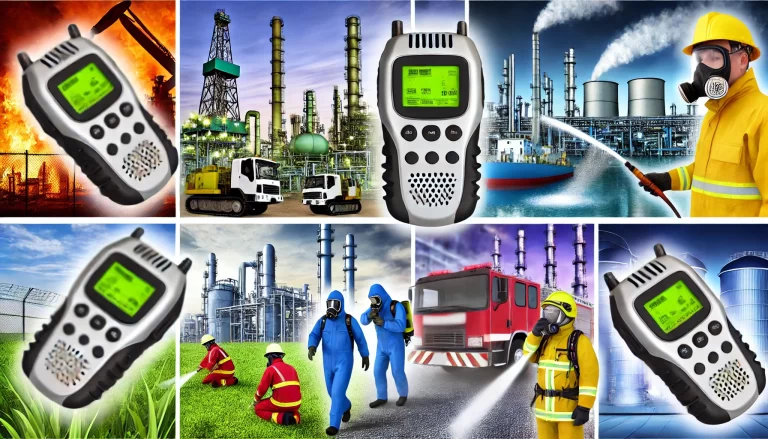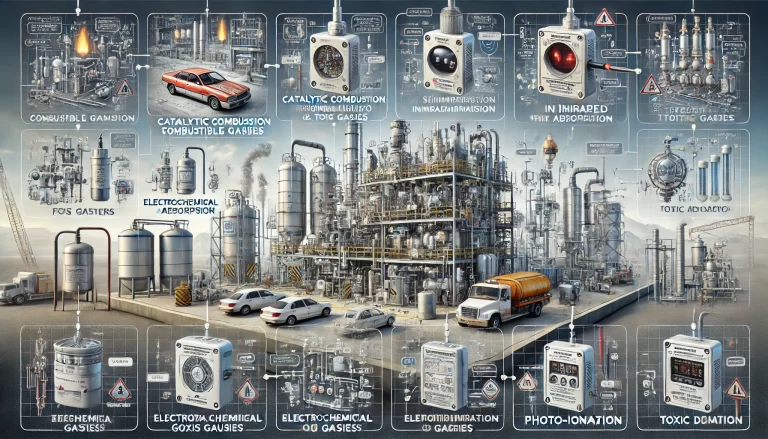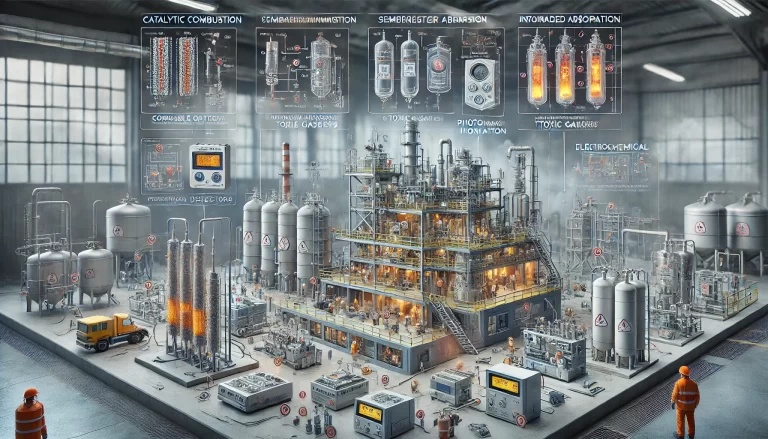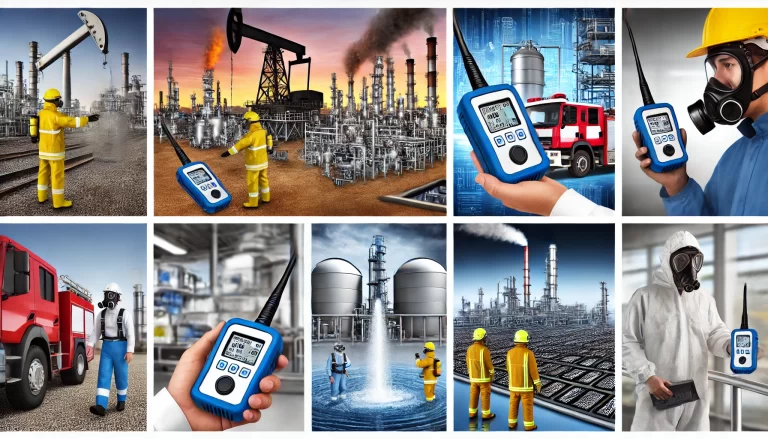Overview
The installation of combustible gas detectors requires careful consideration of several key factors to ensure their effectiveness and reliability. These devices are crucial for detecting and responding to the presence of flammable gases, safeguarding personnel, and preventing potential hazards. Below is a comprehensive guide detailing the critical requirements and recommendations for installing these detectors in various environments.

Key Factors for Installation
1. Proximity to Potential Leakage Points
Detectors should be installed close to potential gas leakage points or target detection areas, such as valves, pipe joints, and outlets.
The ideal placement is within a 1-meter radius of these points, ensuring prompt detection of any leaks while avoiding interference with other equipment’s normal operations.
2. Placement Based on Gas Density
For gases lighter than air (e.g., hydrogen): Place the detector above the suspected leakage point, ensuring it is within 30 cm of the ceiling.
For gases heavier than air (e.g., liquefied petroleum gas): Install the detector below the suspected leakage point, no more than 30 cm above the floor.
3. Mitigating Electromagnetic Interference
Install the detector away from sources of electromagnetic interference, particularly if the device lacks robust interference protection. This ensures accurate readings and prevents operational disruptions.

Important Installation Guidelines
1. Power-Off Installation
Always conduct wiring operations in a powered-off state. Double-check all connections before powering the device.
Ensure that there are no gas leaks in the environment before calibrating the detector using a remote control or similar tools.
2. Detection Coverage
In large spaces, it is recommended to deploy one detector for every 20 to 50 square meters to maintain effective monitoring and safety coverage.
3. Installation Height
Adjust the detector’s height according to the density of the target gas:
For lighter-than-air gases: Position the detector approximately 1 meter from the ceiling.
For heavier-than-air gases: Install the detector 1.5 to 2 meters from the floor.
4. Flexible Mounting Options
Choose mounting methods that suit the environment, such as ceiling suspension, wall mounting, or integration with piping systems. Ensure the installation is secure and stable.
Utilize the provided infrared remote control for easy calibration and adjustment.
5. Wiring and Fire Safety Compliance
Use protective conduits for wiring to prevent damage and ensure compliance with fire safety regulations.
Ensure proper grounding of shielding layers in cables. Use shielded cables with a minimum core diameter of 1 mm² to minimize electrical interference.
6. Orientation of the Sensor
Position the sensor facing downward to enhance its sensitivity and detection accuracy.

Additional Recommendations
Maintenance and Calibration
Regularly inspect and maintain detectors to ensure they remain in optimal working condition. Replace sensors periodically as per the manufacturer’s guidelines.
Environment-Specific Adjustments
In environments with high humidity, dust, or corrosive substances, choose detectors with enhanced durability and protective features.
Visual and Audible Alerts
Ensure that the detectors are equipped with visible and audible alarms to notify personnel of gas leaks promptly.
Documentation and Compliance
Maintain records of all installation and maintenance activities. Ensure that the setup adheres to local regulations and industry standards.

Enhancing Clarity with Visual Aids
To assist with proper placement and configuration, visual aids such as diagrams and illustrations should be included. For example, a chart depicting the recommended installation height based on gas type and density can significantly enhance comprehension.
By following these detailed guidelines, businesses and individuals can ensure the safe and efficient installation of combustible gas detectors, effectively mitigating risks associated with flammable gases in various environments.
